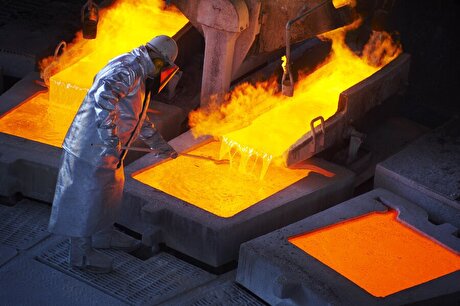
Rise of ethical investing keeps losing social license the top risk to miners

Losing social support, or social licence to operate (SOL), is in fact seen as the main risk mining and metals firms are facing these days, an annual study published by consultancy Ernst & Young (EY) shows.
This is the second straight year that nearly half (44%) of global mining and metals executives rank the topic as the No. 1 threat to their business, showing an important shift in the industry from profit to social responsibility.
This is the second year in a row that global mining and metals executives say that no longer having a social licence is the No. 1 threat to business.
“Increased stakeholder pressure and the rise of ethical (environmental, social and governance, or ESG) investing continues to keep license to operate top of mind for the sector in Canada and abroad,” Jeff Swinoga, EY Canada Mining & Metals Co-Leader, says in the report.
The mining and metals sector is facing greater scrutiny from end consumers, demanding a transparent, ethical supply chain, as well as a lower carbon footprint.
Shareholder activists are driving many miners, particularly those with coal assets, to reshape their portfolios by either reconfiguring existing operations or executing divestments.
“Companies must show how they’re working towards sustainable and inclusive growth to redefine the sector’s image as a responsible source of the world’s minerals. Demonstrating these values is also key to addressing growing workforce challenges,” Swinoga notes.
EY recommends mining bosses to start focusing on their “scope 3” emissions – those made by its customers.
‘If mining and metals companies are going to understand their exposure to climate-related risk and capitalize on the opportunities of the transition to a lower carbon economy, then it is inevitable that they will need to properly account for their scope 3 emissions,” the report notes.
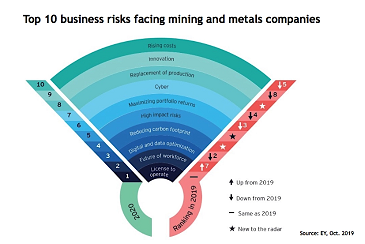
“Mining and metals companies will have to assess the markets they sell to and consider the impact of selling to customers who produce substantial emissions in the use of their products,” it adds.
Among the other risks mentioned by the mining executives interviewed, “future of workforce” rose from 7th to 2nd place in the ranking due to increasing demand for and difficulty attracting the digital and data-related skills needed to support the future of mining.
“Digital and data optimization” fell one place but held its position in the top three business risks cited by miners as they grapple with how to unlock the most value from investments.
Beyond the “Greta effect”

EY’s survey comes barely a week after the world’s second largest miner, Rio Tinto, signed a pact with China’s biggest steelmaker Baowu to develop and implement ways to reduce carbon emissions in the steel sector, which is responsible for about 9% of global carbon dioxide (CO2) emissions.
It also comes on the heels of environmental activist Greta Thunberg’s searing address at the United Nations last week, in which the 16-year-old chided world leaders for not doing enough to address climate change.
Greta Thunberg (16) grabbed the world’s attention at the Climate Action Summit after accusing leaders of stealing her dreams due to their lack of action around climate change. (Image: Anders Hellberg | Wikimedia Commons.)
Thunberg emphasized the urgency of the global situation, referring often to figures from a seminal report released by the Intergovernmental Panel on Climate Change in October 2018 on the impact of 1.5 degrees Celsius of global warming.
The document stated that the planet has already warmed by 1 degree Celsius since the 19th century, and used 1.5 degrees as a threshold beyond which the effects of climate change, such as melting ice, extreme heat and sea-level rise, become life-threatening for tens of millions of people around the world.
Reducing global CO2 emissions by half in ten years, as the almost 200 nations that signed the Paris Accord in 2015 agreed, may not be enough.
“Mathematically and technically, it is possible, but it’s not realistic,” Simon Donner, a climatologist at the University of British Columbia in Vancouver, Canada, said in a piece published Tuesday in Policy Opinions magazine. “To reduce emissions that sharply in what is now only a 10-year period would take enormous changes in countries around the world.”


Trump weighs using $2 billion in CHIPS Act funding for critical minerals

Codelco cuts 2025 copper forecast after El Teniente mine collapse

Electra converts debt, launches $30M raise to jumpstart stalled cobalt refinery

Abcourt readies Sleeping Giant mill to pour first gold since 2014

Barrick’s Reko Diq in line for $410M ADB backing

Nevada army depot to serve as base for first US strategic minerals stockpile
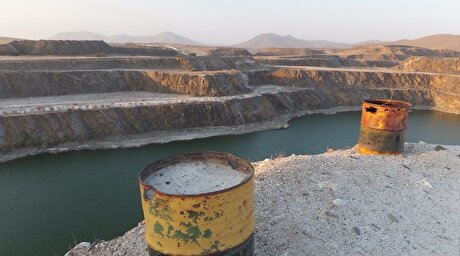
Tailings could meet much of US critical mineral demand – study

Viridis unveils 200Mt initial reserve for Brazil rare earth project

SQM boosts lithium supply plans as prices flick higher
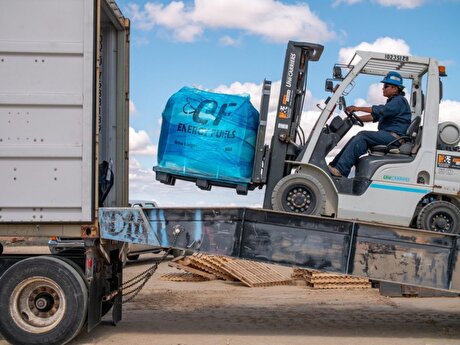
Energy Fuels soars on Vulcan Elements partnership
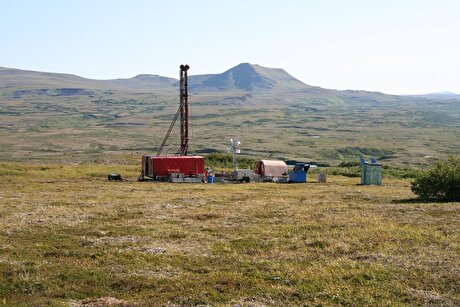
Northern Dynasty sticks to proposal in battle to lift Pebble mine veto
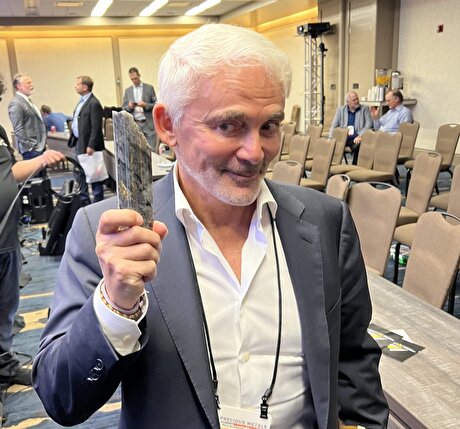
Giustra-backed mining firm teams up with informal miners in Colombia
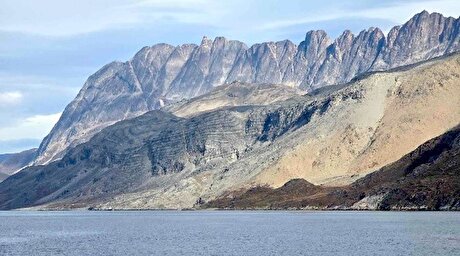
Critical Metals signs agreement to supply rare earth to US government-funded facility

China extends rare earth controls to imported material
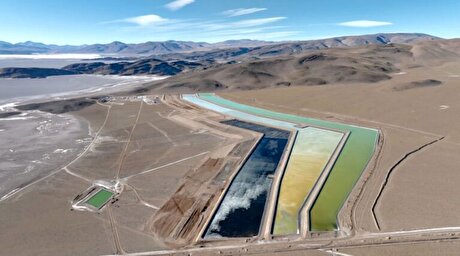
Galan Lithium proceeds with $13M financing for Argentina project

Silver price touches $39 as market weighs rate cut outlook

First Quantum drops plan to sell stakes in Zambia copper mines
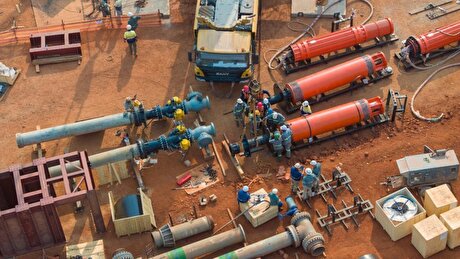
Ivanhoe advances Kamoa dewatering plan, plans forecasts

Texas factory gives Chinese copper firm an edge in tariff war

Energy Fuels soars on Vulcan Elements partnership

Northern Dynasty sticks to proposal in battle to lift Pebble mine veto

Giustra-backed mining firm teams up with informal miners in Colombia

Critical Metals signs agreement to supply rare earth to US government-funded facility

China extends rare earth controls to imported material

Galan Lithium proceeds with $13M financing for Argentina project

Silver price touches $39 as market weighs rate cut outlook

First Quantum drops plan to sell stakes in Zambia copper mines

Ivanhoe advances Kamoa dewatering plan, plans forecasts


